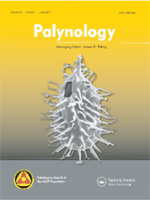Hydrocarbon exploration in the Llanos Foothills of Colombia has intensified during the past several decades. Exploration in this region is problematic owing to structural complexities, rapid lateral facies changes, and the difficulties of acquiring good seismic imaging. These elements increase the uncertainties about the prognosis and subsequent drilling of exploratory wells. Under these conditions, biostratigraphy can play a significant role in the exploratory process. In the Llanos Foothills, palynology is the most useful biostratigraphic tool because pollen is the most abundant fossil group. In this study we analyze pollen information from 70 sections (624,744 palynomorph grains from 6707 samples) to construct a biostratigraphic zonation for the Llanos Foothills and Llanos basins. Using both graphic correlation and constrained optimization in our analysis, we propose 18 palynological zones for the Cenozoic of the Llanos and Llanos Foothills. These zones are tied to the geological timescale using 18 calibration points that include carbon isotopes, foraminifera, and magnetostratigraphy.
How to translate text using browser tools
1 June 2011
A Palynological Zonation for the Cenozoic of the Llanos and Llanos Foothills of Colombia
Carlos A. Jaramillo,
Milton Rueda,
Vladimir Torres
ACCESS THE FULL ARTICLE
It is not available for individual sale.
This article is only available to subscribers.
It is not available for individual sale.
It is not available for individual sale.

Palynology
Vol. 35 • No. 1
June 2011
Vol. 35 • No. 1
June 2011
biostratigraphy
Cenozoic
pollen
South America
tropics
zonation




